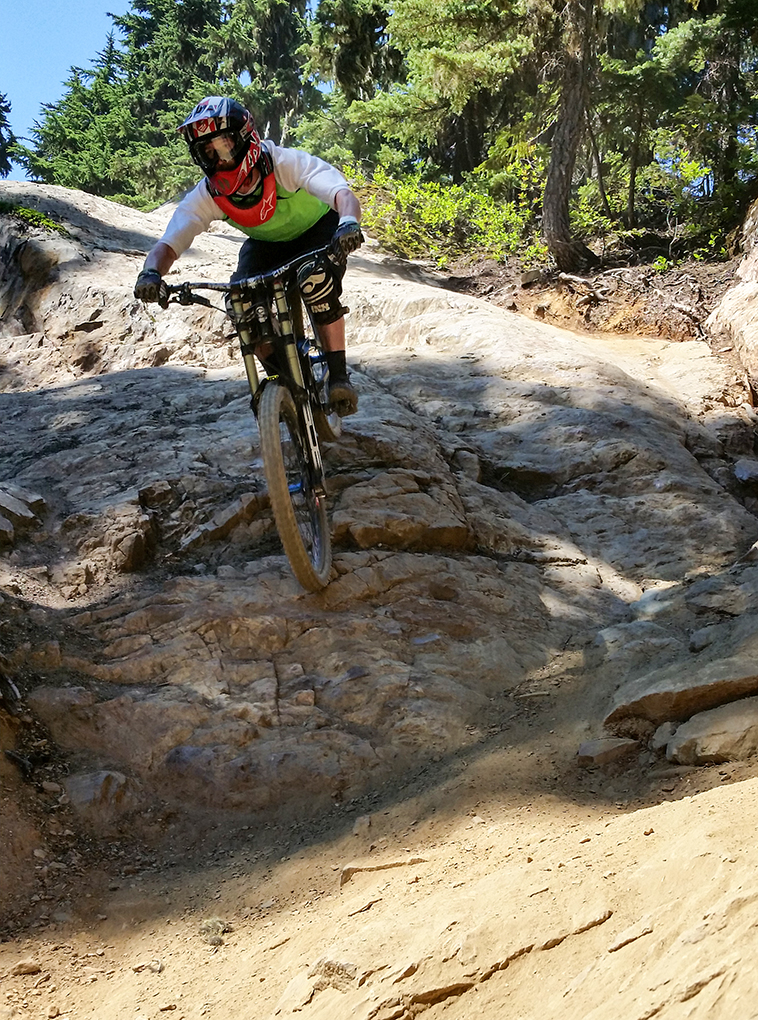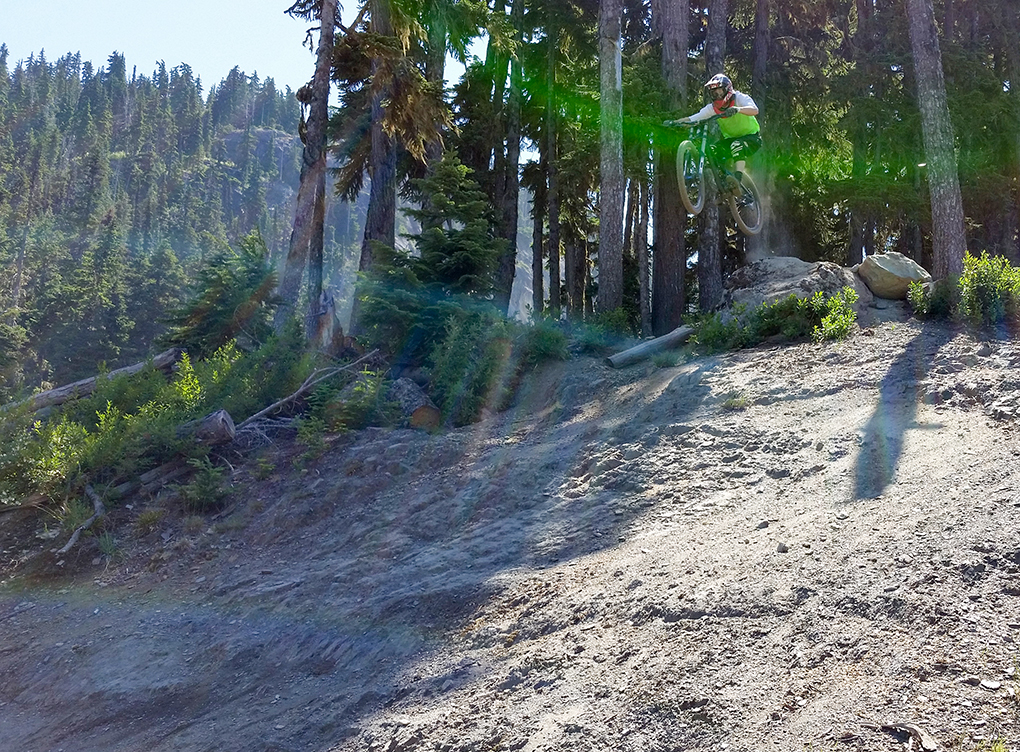Performance
The X01 DH kit is really built around the 7-speed cassette, and as I mentioned above, there are some advantages there.
I ran a 34-tooth chainring, and I found that gearing to be comparable to every other 10-speed DH bike I’ve ridden; I was in my hardest gear on the fastest parts of the trail, but I never ran out of gears.
And again, the option to gain some clearance is definitely nice with this kit, especially since a lot of new DH bikes come with relatively low bottom brackets.

I also noticed the larger jumps between gears. Where, on a 10-speed cassette I might be making two shifts to get to the gear I wanted, I’d often be making only one shift with the 7-speed setup. And when I was late on my shifts and all of a sudden found myself going up a rise in a gear that was way too hard, it was quicker and cleaner getting into an easier gear.
Throughout my time on this drivetrain, shifting was spot on. As I mentioned above, the shifting action isn’t quite as light as on a XX1 setup, but on the flip side, there’s more of a ka-chunk when you thumb the shifter. That extra feedback is nice when you’re plowing down something rough. It let’s you know that yes, you did actually hit the shifter (which isn’t always a sure thing when you’re getting bounced around).
Purely in terms of performance, this setup works really, really well. But that doesn’t quite tell the whole story…
Durability
While the drivetrain’s performance was great, I have to qualify that by saying that the drivetrain’s performance was great until it broke.
Specifically, the b-set plate on the rear derailleur snapped. This is the little plate that gets sandwiched between the derailleur and the frame, and the b-set screw rests against a little tab that’s part of the plate.
On my derailleur, this plate lasted through 5 days of downhilling before it broke. After talking to a few shops, it sounds like this is not at all unusual, and most guys that have been running this derailleur for very long have gone through a few of them.

On the upside, the plates are really easy to replace; it’s about a three minute fix. And on top of that, when mine broke, I was at least able to finish my lap and ride it out.
On the downside, those plates can be somewhat hard to come by, so it might be worth stocking up on them if you’re running this setup.
The issue seems to be that, when riding through rough terrain, the derailleur pivots around the mounting bolt, causing the b-set screw to impact the tab on the plate. Apparently this fatigues the plate enough to cause it to break fairly quickly.
While the b-set plate is far and away the biggest issue I had, there’s a couple other potential tweaks that seem like they’d be worthwhile.
Potential Improvements
The cassette is spaced so that it sits on the outermost edge of the freehub body. Since the cluster only has 7 gears, there’s some extra room in there. Ideally, that space could have been used to create a wider hub shell with wider flanges, thus allowing for a laterally stronger wheel. But that would require a whole new hub and freehub body design, and since we’re already being inundated with new standards and different hub widths, it’s nice that this drivetrain is built around existing technology.
Notwithstanding the flange width issue, if the cassette was set so that it was positioned on the inboard portion of the freehub, that would mean that the derailleur would spend more time in a position that was further tucked under the frame, and thus more protected.

Along those same lines, while the X-Horizon rear derailleur worked really well in terms of shifting performance (even under load and through rough terrain), it does stick out pretty far.
In almost all gears, the X01 DH derailleur is more exposed to getting sheared off by rocks and other junk along the trail than pretty much any other derailleur on the market. So far I haven’t had any issues with clipping my derailleur, but it’s purely a matter of when, not if. Especially since these derailleurs aren’t cheap to replace, I’m not really looking forward to that eventuality.
Bottom Line
When this kit is running, it’s fantastic. It shifts really well, there’s noticeably less ghost shifting than on any other DH drivetrain I’ve ridden, and the advantages of the 7-speed cassette are definitely worthwhile in the real world.
On top of all of that, it’s really light, which can largely be attributed to the fancy (and expensive) cassette.
But it’s not all roses and champagne. The durability issues with the rear derailleur are a significant problem. Added to that are the potential issues with smashing the bulky derailleur on trailside rocks, which makes for an expensive repair that’s made more difficult by the fact that there’s only one option compatible with the rest of the drivetrain.
So for the racer who is looking for the best of the best and is ok with a bit of preventative maintenance, this is the top performing DH drivetrain out there. But for the rest of us, the cost and durability issues mean that this drivetrain probably isn’t the best choice just yet.
